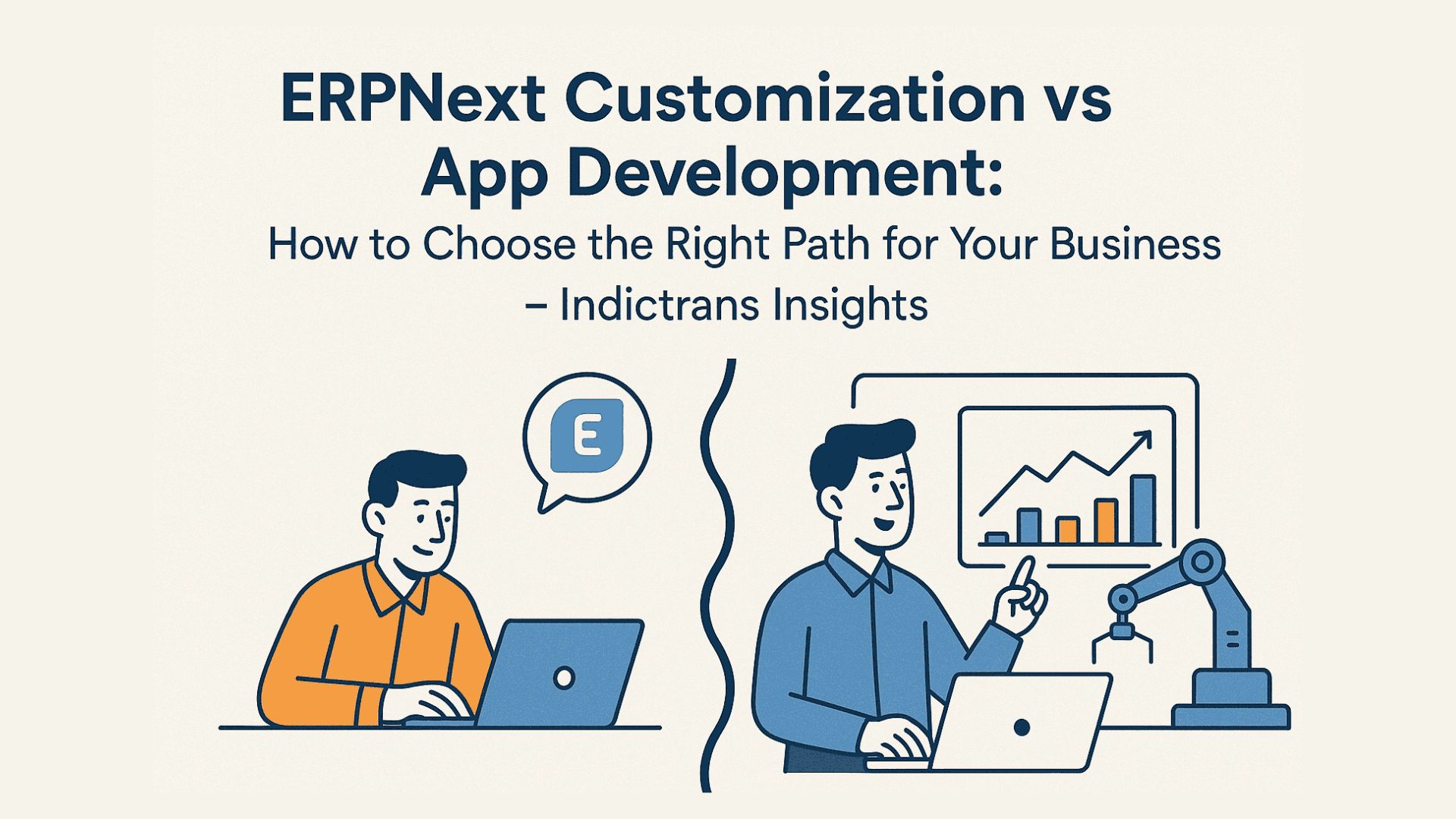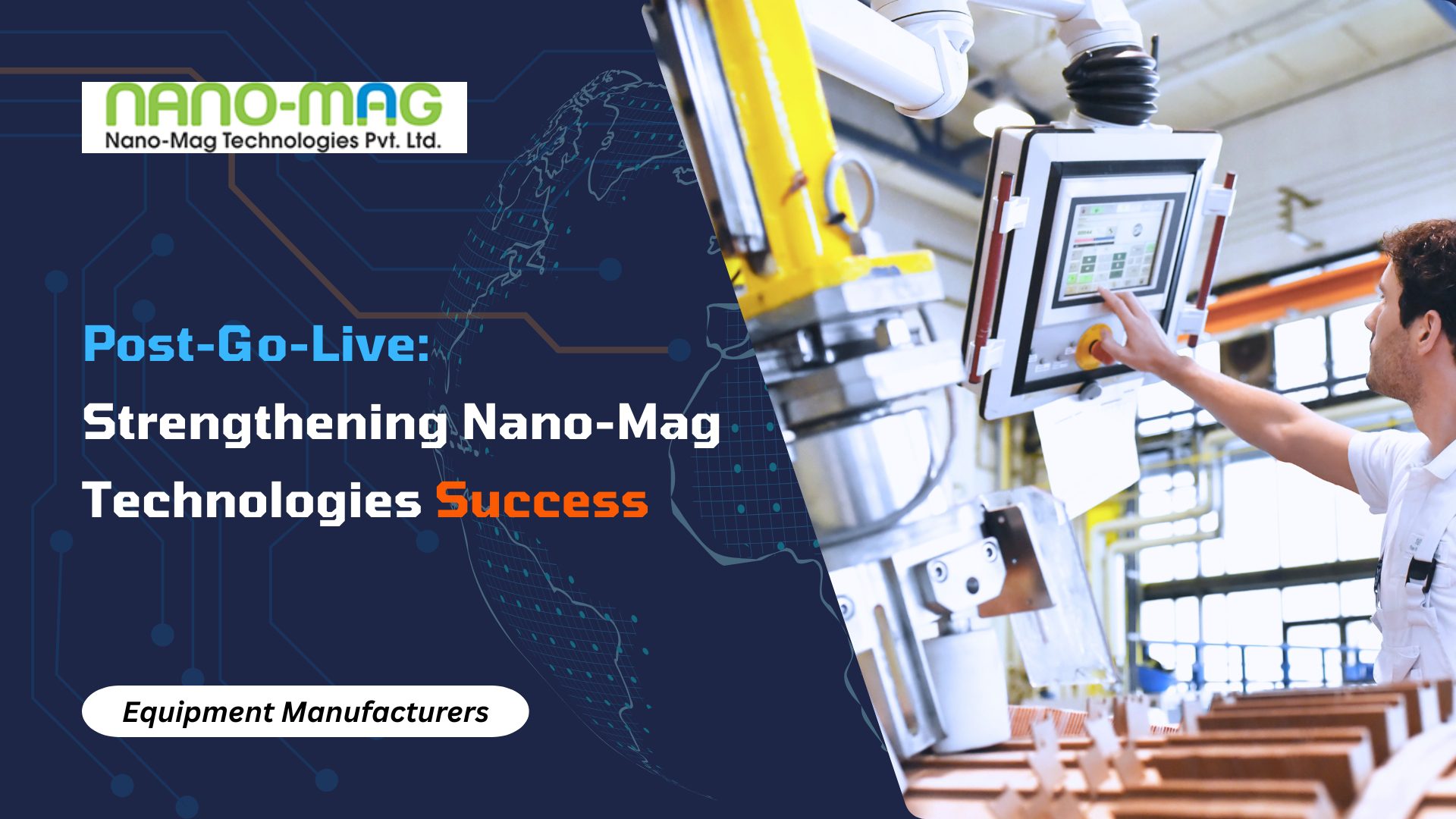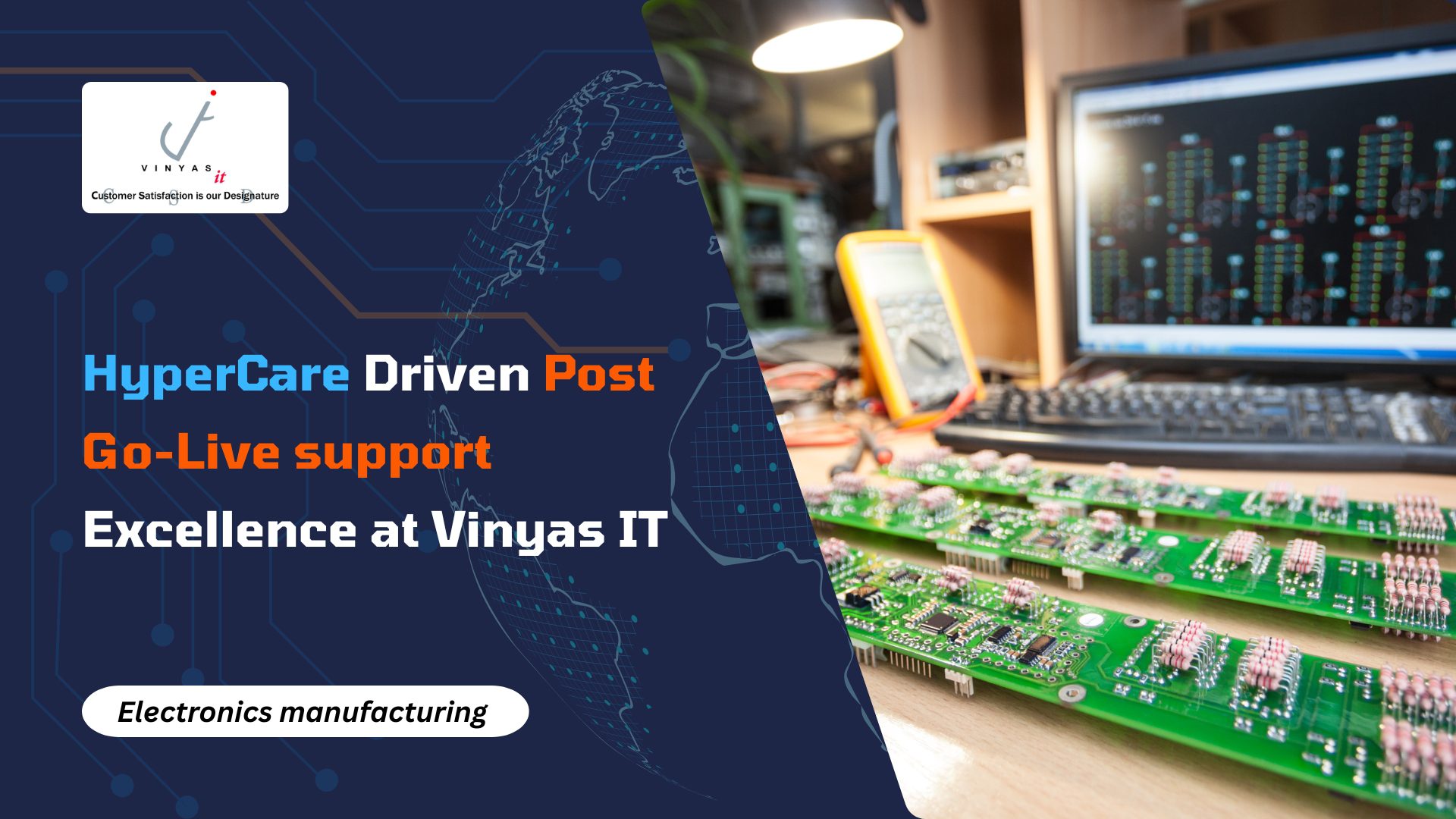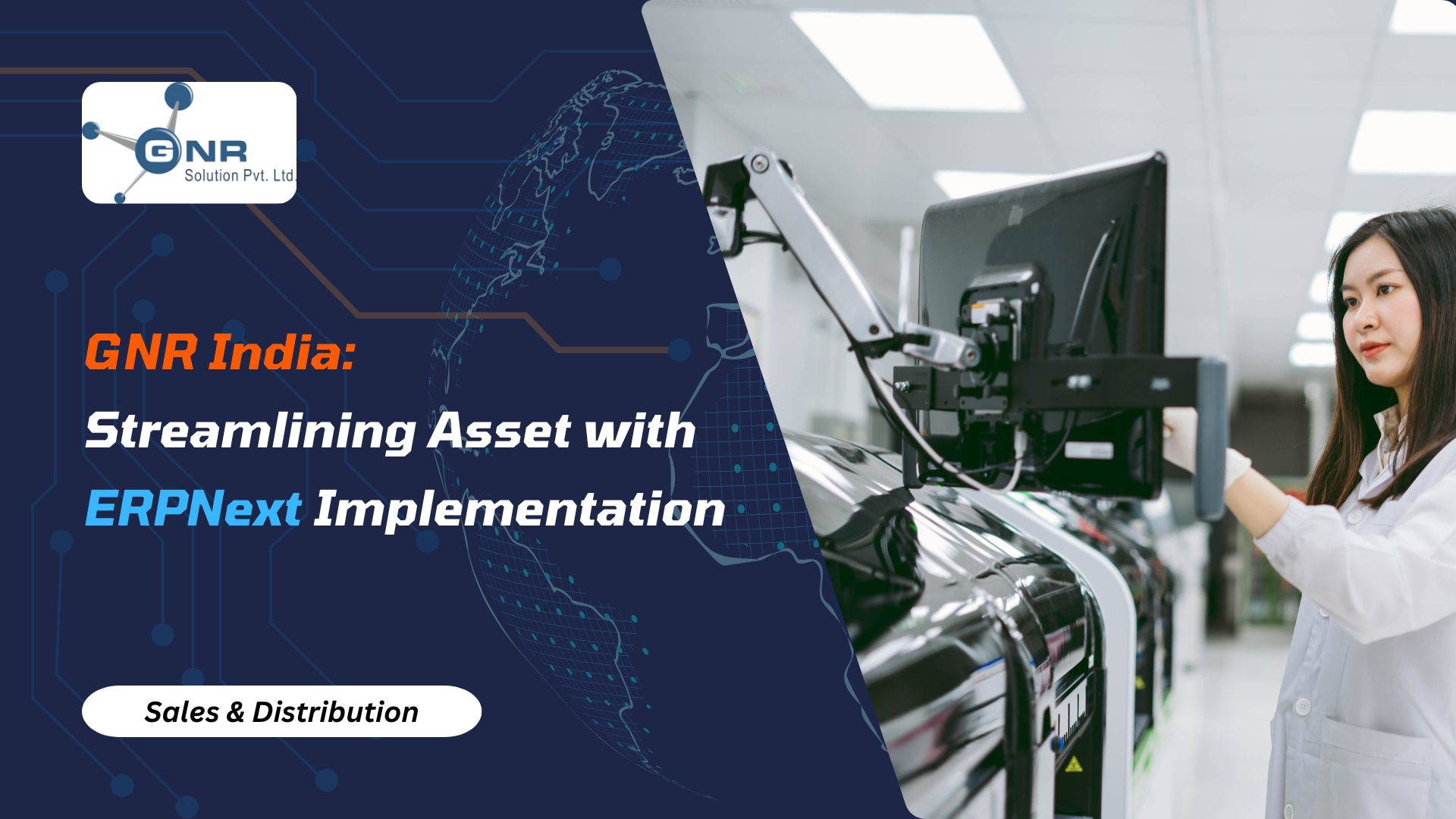Building upon our initial discussion, let’s delve deeper into the nuances of choosing between ERPNext customization and standalone application development. This decision isn’t merely a technical one; it’s a strategic imperative that can significantly impact your organization’s agility, scalability, and long-term technological landscape. At Indictrans, we emphasize a thorough understanding of the underlying principles to guide our clients toward optimal solutions.
Understanding the Core Philosophies:
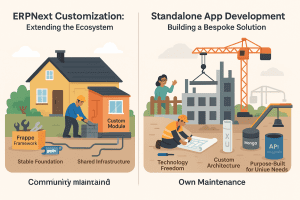
ERPNext Customization: Extending the Ecosystem: Think of ERPNext customization as adding rooms or renovating within an existing house. You’re leveraging the established foundation, infrastructure (database, user management, security), and interconnectedness of the ERP system. The Frappe Framework, with its Python-based scripting, robust ORM, and integrated UI development tools (like FrappeJS), provides a powerful toolkit for this extension. The core philosophy here is leveraging the existing, well-maintained platform to address specific needs while benefiting from future ERPNext updates and community contributions.
Standalone App Development: Building a Bespoke Solution: Developing a separate application is akin to building a new structure altogether. This offers complete freedom in technology choice, architecture, and user experience. However, it also necessitates managing its own infrastructure, security, data management, and, crucially, integration with ERPNext if data needs to be shared. The core philosophy is creating a highly tailored solution for a specific problem, potentially utilizing technologies that are better suited for that particular domain.
Key Considerations in Granular Detail:
Functional Fit and Data Model Congruence:
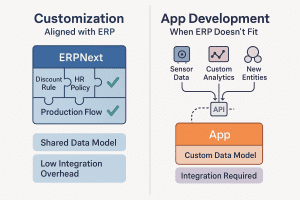
Customization: If the required functionality naturally aligns with ERP concepts (e.g., a new type of discount rule, a specific production process variation, a custom HR policy), customization is often the more logical choice. The existing data model can likely be extended or adapted without significant disruption. Data integrity and consistency are inherently easier to maintain within a single system.
App Development: If the functionality involves entirely new data entities and relationships that don’t map well to the ERPNext structure (e.g., a sophisticated IoT sensor data aggregation and analysis platform), a separate application with its own optimized data model might be necessary. Integration then becomes a critical aspect, requiring well-defined APIs and data synchronization strategies.
Performance and Scalability Characteristics:
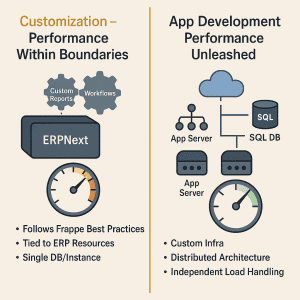
Customization: While ERPNext is designed for scalability, deeply complex or computationally intensive customizations might, in extreme cases, impact the performance of the core ERP system, especially under heavy load. Careful optimization and adherence to Frappe best practices are crucial. Scalability is generally tied to the ERPNext instance itself.
App Development: Standalone applications can be architected with specific performance and scalability requirements in mind, potentially utilizing different database technologies or distributed computing paradigms. This offers greater control over these critical aspects but adds the complexity of managing a separate infrastructure.
Technology Stack and Skillset:
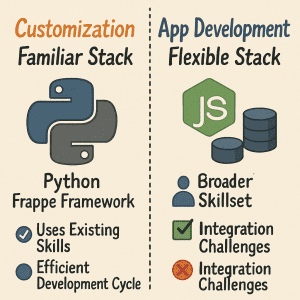
Customization: Enhance Python and the Frappe Framework. If your team or Indictrans’ expertise is primarily in this stack, customization offers a more efficient development cycle.
App Development: Allows for the selection of the most appropriate technology stack for the specific problem (e.g., Node.js for real-time applications, specialized databases for large datasets). This might require a broader skillset within your team or engaging with developers specializing in those technologies. Integration complexity increases with disparate technology stacks.
Maintenance, Upgrades, and Long-Term Cost:
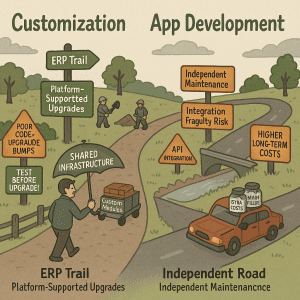
Customization: Customizations within ERPNext generally benefit from the platform’s ongoing maintenance and upgrade cycles. However, poorly written or overly complex customizations can introduce challenges during upgrades. Careful coding practices and thorough testing are essential. The long-term cost can be lower due to the shared infrastructure.
App Development: Standalone applications require independent maintenance, security patching, and upgrades. Integration points with ERPNext also need to be maintained across ERPNext upgrades. This can lead to higher long-term operational costs and potential integration fragility if not carefully managed.
Development Speed and Time-to-Market:
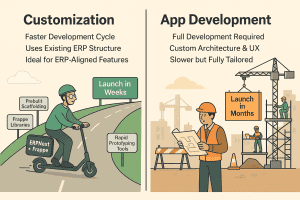
Customization: For functionalities that fit well within the ERPNext framework, customization often offers a faster development cycle due to the existing scaffolding, libraries, and development tools provided by Frappe.
App Development: Building a new application from scratch can take significantly longer, especially for complex functionalities requiring extensive UI/UX design, backend development, and testing.
Illustrative Scenarios:
Scenario 1: Complex Commission Calculation:
So, picture this: you’ve got a really smart way of paying your sales team. It’s not just a simple “you sell this, you get that percentage.” Nope, it’s a bit more interesting. Maybe if someone sells a lot, they get a bigger cut. Or perhaps selling certain products is more rewarding than others. And who they sell to might even play a role in their commission.
Now, if you’re using a regular business software like ERPNext, your first thought might be, “Whoa, this is too fancy for the standard rules! I probably need a whole new app just to figure this out.”
But hold on! ERPNext is actually pretty clever. It has these cool features that let you bend the rules and even create your own ways of keeping track of information. Think of it like being able to customize the software to fit exactly how your business works.
So, instead of going through the headache of building a separate app. You can often just use these built-in tools within ERPNext to handle your special commission system.
Why is this cool? Because everything stays together! Your sales info and how you pay your team are all in the same place. This makes it way easier to keep track of things and makes sure everything lines up nicely with your accounting. No need to juggle two different systems – everything works smoothly together within ERPNext.
Scenario 2: Real-time IoT Data Visualization for Manufacturing:
A manufacturing company wants a live dashboard displaying real-time data from shop floor sensors. While ERPNext can store and display data. A dedicated application built with technologies optimized for real-time data streaming and visualization (e.g., MQTT, Node.js. and a specialized charting library) might offer superior performance and a richer user experience. Integration with ERPNext would then focus on feeding relevant aggregated data into the ERP for analysis and reporting.
The Indictrans Approach:
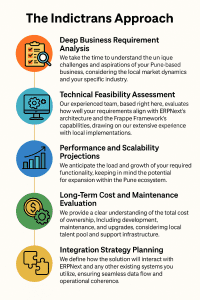
At Indictrans, we don’t offer a one-size-fits-all answer. Our process involves:
Deep Business Requirement Analysis: We take the time to understand the unique challenges and aspirations of your business, considering the local market dynamics and your specific industry.
Technical Feasibility Assessment: Our experienced team, based right here, evaluates how well your requirements align with ERPNext’s architecture and the Frappe Framework’s capabilities, drawing on our extensive experience with local implementations.
Performance and Scalability Projections: We anticipate the load and growth of your required functionality, keeping in mind the potential for expansion within the ecosystem.
Long-Term Cost and Maintenance Evaluation: We provide a clear understanding of the total cost of ownership, including development, maintenance, and upgrades, considering the local talent pool and support infrastructure.
Integration Strategy Planning: We define how the solution will interact with ERPNext and any other existing systems you utilize, ensuring seamless data flow and operational coherence.
Our goal is to empower our clients to make informed decisions that lead to robust, scalable, and cost-effective solutions. Sometimes, the answer is extending the power of ERPNext through thoughtful customization. Other times, a strategically built and well-integrated standalone application is the more appropriate path. The key lies in understanding the nuances and making choices aligned with your long-term business objectives.
Make every process smoother by implementing ERPNext.
Follow us on LinkedIn.

